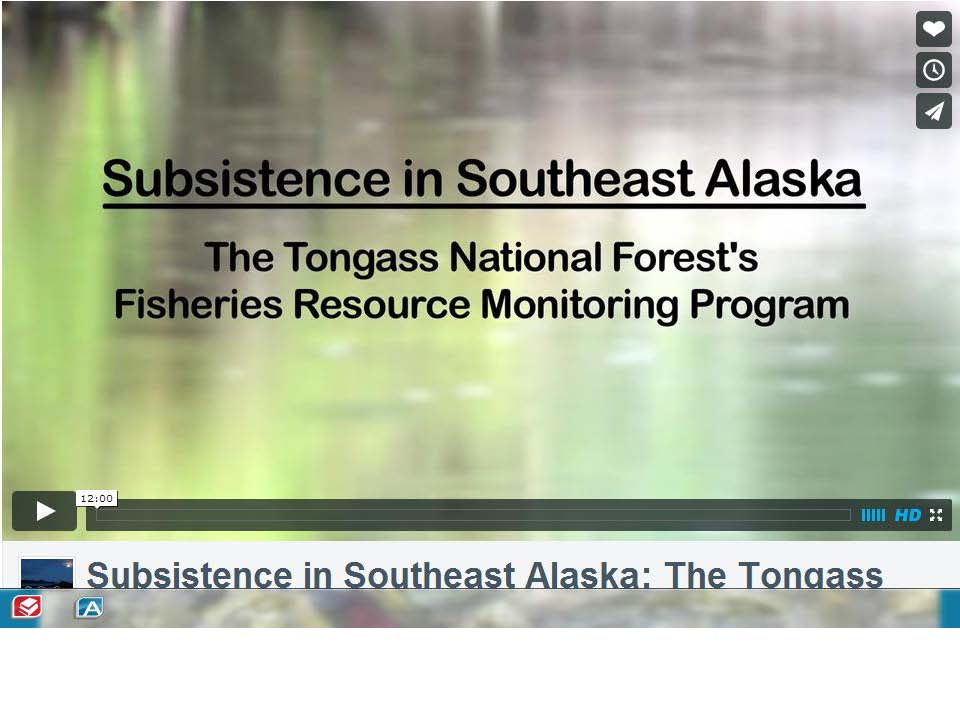Subsistence in Southeast Alaska: The Tongass National Forest Services Fisheries Resource Monitoring Program
Although we often associate our National Forests with trees and silviculturalists, BY FAR, the most valuable resource that the Tongass National Forest provides is in the production of all 5 species of wild Pacific salmon. Managing salmon habitat and the fish populations within the forest is one of the key roles of National Forest Service staff in Alaska. The Tongass National Forest is the largest National Forest in the United States. Its 17 million acres is home to 32 communities that use and very much depend on the resources that this forest provides. On this National Forest, fisheries and watershed staff are probably the most critical positions on the entire Forest and are responsible for the keystone species in the temperate rainforest ecosystem—Salmon–a $1 Billion per year commercial fishery that serves up delicious salmon to people around the nation and the world, not to mention subsistence harvests that feed thousands of rural community members in Alaska. These staff also carry the legacy of thousands of years of sustainable management on their shoulders.
Like nothing else, salmon have shaped the cultures and the lifestyle of the peoples and communities of Southeast Alaska. The Tlingit and Haida people who have called the Tongass home for thousands of years, have learned and adapted to the natural cycles of salmon. Deeply held cultural beliefs have formed unique practices for “taking care of” and ensuring the continuance of salmon runs. As documented by Anthropologist Thomas Thornton in his book, Being and Place Among the Tlingit, “the head’s of localized clan house groups, known as yitsati, keeper of the house, were charged with coordinating the harvest and management of resource areas” like the sockeye salmon streams and other important salmon runs.
The staff of the Fisheries and Watershed program has integrated Alaska Native organizations, individuals, and beliefs into salmon and fisheries management programs on the Tongass and have hired talented Alaska Native individuals as staff in the USDA National Forest Service. Through the efforts of the Fisheries and Watershed program and its staff, a variety of formal agreements, joint programs, and multi-party projects that manage and protect our valuable salmon resources have been developed. The programs on the Tongass are case-studies for the rest of the world where lands and resources are owned by the public while being managed through the collaborative efforts of professional resource managers in government agencies, local peoples with intimate place-based knowledge, and involve multi-party stakeholders who use and depend on the resource.
The Tongass is America’s Salmon Rainforest and the Forest Service’s Fisheries Resource Monitoring Program is a stellar example of how we manage a National Forest to produce and provide salmon for people across the entire country as well as the people who call this forest their home.

